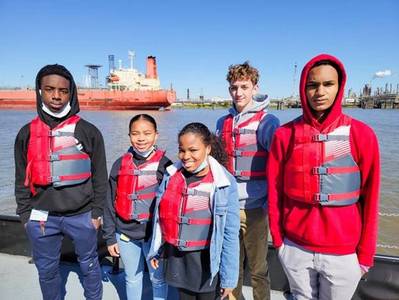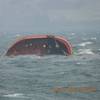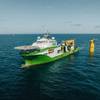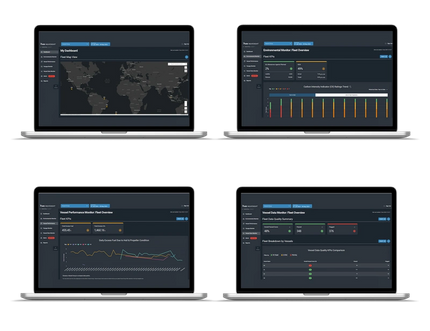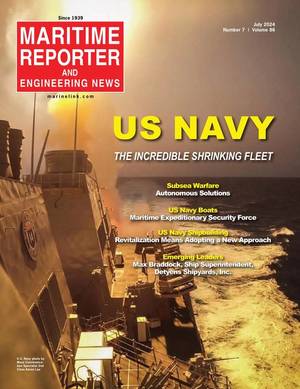Let’s Get One More National Multi Mission Vessel, but Let’s Add Some Grit
The new maritime academy school ships being built at Philly Shipyard (officially designated as National Security Multi-Mission Vessels) are an exciting development and provide a significant boost to our national maritime educational system. The technology on our existing school ships has very little relevance to the present marine industry, and these new vessels will not only provide the students with a better educational setting, in their multi-role deployment, they will also provide more exposure to maritime education.
Maritime education is one of the country’s educational gold standards. Maritime Academy graduates receive an education that not only strengthens our maritime readiness, but, maybe even more significantly, provides a rare educational approach that straddles practical and theoretical education and professional and technical careers. Maritime Academy graduates have been primed to work on real tasks, in real teams, in real settings, using both technical and non-technical skills (which I have referred to as STEMPHLA).
From our industry point of view, we want to get the best and brightest to enter our industry, but maritime education has a more important national benefit. Maritime education teaches grit and that is what we need both at sea and ashore.
The concept of grit was first formulated by Dr. Angela Duckworth, and she defined it as a combination of passion and perseverance for a singularly important goal. She considers it to be the magic ingredient in education, particularly in the STEM field, and there is significant evidence that today grit has become a rare ingredient in education, but it has been very difficult to study.
As far as I have been able to determine, this lack of supporting evidence is related to researchers running experiments, but not looking out of their cockpits to figure out where grit is making the difference.
In education there is a huge difference between experiments and real life. The biggest problem is that experiments in education often run into the natural resistance of the experimental subjects, which in education are not just the students, but also the parents, the teachers, the researchers themselves, and even the media.
Therefore, if an existing educational program is tasked to dial up the grit, the researchers need to design a grit setting where the teachers need to function within that setting, the parents need to buy in, and then somehow the students need to believe they are working in a real goal-oriented setting, rather than a pretend goal-oriented setting. And this is where maritime education comes in.
It is important to remember that a grit goal is only effective if it is strongly motivating and real. As a student and as a trainer, I have too often seen educational exercises fail because there was no actual motivation to achieve the goal or the goal was not real. For a teacher to say “Today we will do a scientific experiment; we will boil water and determine the boiling point temperature” will result in massive BS alarms (sorry, I cannot think of a less scatological term) firing off in the students, since it is a false goal. The students know that they are going through an exercise that has been done a billion times before. An exercise has no real goal if the goal has been achieved a billion times before.
However, even a simple experiment like this can have real educational and grit value if the teacher says “If you read your textbook, you will know that many centuries ago it was discovered that water boils at a consistent temperature. That is nice, but what nobody knows today is what the boiling temperature of your spit is. Therefore, I want everybody to spit in a test tube and measure their spit boiling point. We will then collect that data and plot it. By the way, I have no idea what the answer will be, so I am as curious as you might be.”
It is interesting to note that this is a learning project, and the goal of the learning project is to engage the student in unexpected ways (catharsis) to train them to regard their world dynamically rather than passively. That educational benefit will not express itself in standardized tests and is inherently hard to measure.
Let’s now transfer these concepts to maritime education. Goal setting is much easier in maritime education.
Here is a simple one: “We are going out on a boat. We will show you how to operate it and then you get to do it yourself. If you do it right, you may be somewhat miserable; if you do it wrong, you will be cold, wet, and embarrassed.”
This was an incredibly common educational path until post WWII as in “Hey, you 12-year-old, please take this horse into town to get it shoed.”
However, today this has devolved into “Dear 12-year-old, please put on your coat and shoes so I can take you to soccer practice.”
Remarkably, maritime education is the only remaining setting where the path between showing and having the student do it themselves with manageable risk of harm still exists and can be taught to students 12 years of age and even a little younger. This educational setting exists in the form of maritime high schools, and there are over 50 maritime high schools all over the United States. While the large new school ships can provide sophisticated professional training, it does not inherently develop grit. Grit develops on small craft and is best introduced to younger students at the high school level or even earlier. Therefore, while the academies certainly deserve their new vessels, why not also provide the maritime high schools with new training vessels?
For the cost of one additional National Security Multi-Mission Vessel ($300 million), it should be possible to build about a hundred 60-foot simple lower speed aluminum catamarans outfitted for light oceanographic, environmental, wildlife, and fisheries research work. These vessels would be assigned to existing and newly formed maritime high schools to function as floating classrooms where students can be trained in vessel operation and navigation and maritime research in all its forms. And there is so much left to research on the water. (Some of which could be contracted research to local state and national entities, where student participation in real research is a further grit driver.)
While the design would be standardized, they would be outfitted for local environmental conditions where some may be all electric, while others may be hybrid. They would be designed to be modified or outfitted to take advantage of emerging technologies. These vessels will provide high school students with the grit to apply to maritime academies for maritime careers or any other university level STEM programs.
A fleet of 100 of these vessels will undoubtedly provide a higher level of exposure and educational bang for its buck than one additional NSMV.
Many years ago, my father and I took my seven-year-old son on a head boat fishing trip. My son was the only kid aboard; and when we got to the fishing ground, the mate took a spot next to my son and said “Let’s see what we got here.” He put his rod out and a few minutes later he said to my son “Kid, take my rod; I have to talk to the Captain.” The moment my son had the rod in his hands, the reel spun out and my son got to reel in his first fish. My father was delighted; and when we got back to the dock, he handed the mate a big tip. The mate said “Thanks, but I don’t need your money.” Then he pointed at my son, “I just want to get them when they are young.” I have been told drug dealers use the same approach; instead, let’s spend some money to get our kids some grit.
- For every column I write, Maritime Reporter & Engineering News has agreed to make a small donation to an organization of my choice. For this column I nominate the Maritime Primary and Secondary Education Coalition.




